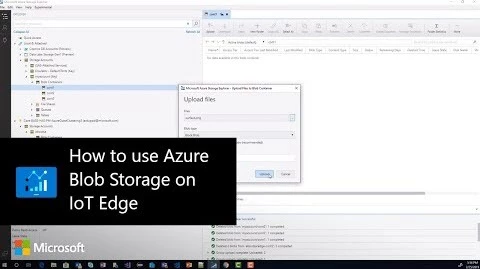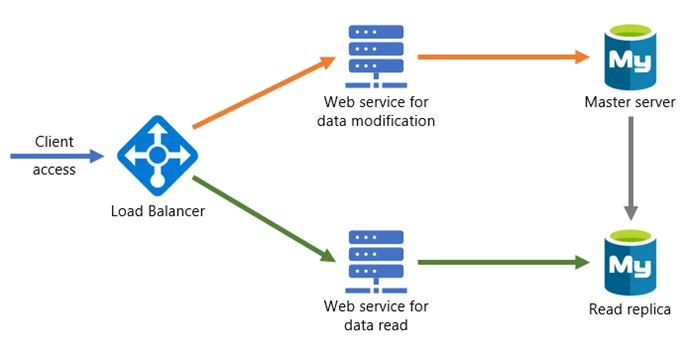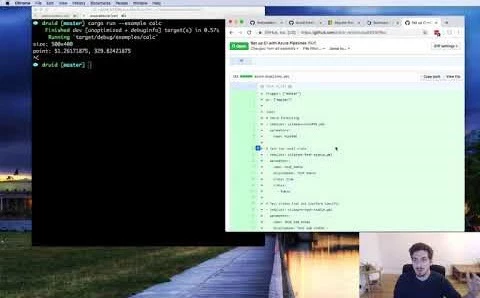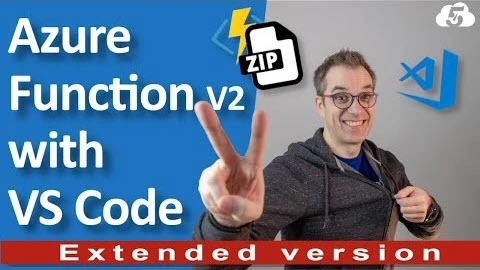Now in preview
Azure Premium Blob Storage public preview
Announcing the public preview of Azure Premium Blob Storage. Premium Blob Storage is a new performance tier in Azure Blob Storage, complimenting the existing Hot, Cool, and Archive tiers. Premium Blob Storage is ideal for workloads with high transactions rates or require very fast access times, such as IoT, Telemetry, AI, and scenarios with humans in the loop such as interactive video editing, web content, online transactions, and more.
Service Fabric Processor in public preview
Service Fabric Processor is a new library for consuming events from an Event Hub that is directly integrated with Service Fabric, it uses Service Fabric's facilities for managing partitions, reliable storage, and for more sophisticated load balancing. Service Fabric Processor is currently in preview and available on NuGet. The source code and a sample application is available on GitHub. See post for links.
Azure Blob Storage on IoT Edge now includes Auto-Tiering and Auto-Expiration functionalities
Introducing auto-tiering and auto-expiration functionalities to our “Azure Blob Storage on IoT Edge” module and are now available in public preview. Azure Blob Storage on IoT Edge is a light-weight, Azure-consistent module which provides local block blob storage allowing you to store and access data efficiently, process if required, and then automatically upload to Azure. These new features are available for Linux AMD64 and Linux ARM32.
Also available in preview
- Azure Monitor for VMs (preview) available in Central Canada and UK South
- Threat intelligence-based filtering for Azure Firewall is now available in preview
- New capabilities in Azure Monitor alerts
Now generally available
Secure server access with VNet service endpoints for Azure Database for MariaDB
Now generally available for Azure Database for MariaDB, secure server access with VNet service endpoints. VNet service endpoints enable you to isolate connectivity to your logical server from a given subnet within your virtual network. There is no additional billing for virtual network access through VNet service endpoints. The current pricing model for Azure Database for MariaDB applies as is.
Scaling out read workloads in Azure Database for MySQL
Read replicas are now generally available to all Azure Database for MySQL users. For read-heavy workloads that you are looking to scale out, you can now use read replicas which make it easy to horizontally scale out beyond a single database server by supporting continuous asynchronous replication of data from one Azure Database for MySQL server to up to five Azure Database for MySQL servers in the same region.
Now available: Azure DevOps Server 2019
Announcing the official release of Azure DevOps Server 2019, previously known as Team Foundation Server. Azure DevOps Server 2019 brings the power of Azure DevOps into your dedicated environment and you can install it into any datacenter or sovereign. Azure DevOps includes developer collaboration tools which can be used together or independently, including Azure Boards (Work), Azure Repos (Code), Azure Pipelines (Build and Release), Azure Test Plans (Test), and Azure Artifacts (Packages). These tools support all popular programming languages, any platform (including macOS, Linux, and Windows) or cloud, as well as on-premises environments. Azure DevOps Server 2019 is now generally available.
Microsoft opens first datacenters in Africa with general availability of Microsoft Azure
Announcing the general availability of Microsoft Azure from our new cloud regions in Cape Town and Johannesburg, South Africa. The launch of these regions marks a major milestone for Microsoft as we open our first enterprise-grade datacenters in Africa, becoming the first global provider to deliver cloud services from datacenters on the continent. The new regions provide the latest example of our ongoing investment to help enable digital transformation and advance technologies such as AI, cloud, and edge computing across Africa.
Real-time serverless applications with the SignalR Service bindings in Azure Functions
Announcing the general availability of SignalR Service bindings in Azure Functions. SignalR Service is a fully managed Azure service that simplifies the process of adding real-time web functionality to applications over HTTP. This real-time functionality allows the service to push messages and content updates to connected clients using technologies such as WebSocket. As a result, clients are updated without the need to poll the server or submit new HTTP requests for updates. SignalR Service bindings in Azure Functions is available in all global regions where Azure SignalR Service is available.
Azure Databricks – New capabilities at lower cost
Announcing the general availability of Azure Databricks now with support for Data Engineering Light and Azure Machine Learning. Azure Databricks provides a fast, easy, and collaborative Apache Spark™-based analytics platform to accelerate and simplify the process of building big data and AI solutions backed by industry leading SLAs. Customers can now get started with Azure Databricks and a new low-priced workload called Data Engineering Light that enables customers to run batch applications on managed Apache Spark with the added benefit of having an optimized, autoscaling, collaborative workspace, automated machine learning, and end-to-end Machine Learning Lifecycle management.
Microsoft continues to build the case for data estate modernization on Azure
Announcing the general availability of Azure Data Lake Gen 2 and Azure Data Explorer. With the latest release of Azure SQL Data Warehouse, Microsoft doubles-down on Azure SQL DW as one of the core data services for digital transformation on Azure. In addition to the fundamental benefits of agility, on-demand scaling, and unlimited compute availability, the most recent price-to-performance metrics from the GigaOM report are one of several compelling arguments made to customers for adopting Azure SQL DW together with Power BI for rich visualization, these enhanced set of capabilities cement Microsoft’s leadership position around Cloud Scale Analytics.
Also generally available
- General availability: Azure Kubernetes Service in France Central
- General Availability: Azure Lab Services
News and updates
Announcing new capabilities in Azure Firewall
Announcing the launch of two new key capabilities to Azure Firewall: threat intelligence-based filtering and service tags filtering. Azure firewall can now be configured to alert and deny traffic to and from known malicious IP addresses and domains in near real-time as well as to use service tags in the network rules destination field. Azure Firewall is a cloud native firewall-as-a-service offering which enables customers to centrally govern all their traffic flows using a DevOps approach.
Announcing new Azure Security Center capabilities at RSA 2019
Announcing new Azure Security Center capabilities in Azure and Microsoft 365 that strengthen unified security management and advanced threat protection solutions for hybrid cloud workloads. Azure Security Center now leverages machine learning to reduce the attack surface of internet facing virtual machines. It’s adaptive application controls have been extended to Linux and on-premises servers, and extends the network map support to peered virtual network (VNet) configurations. If you have Azure Security Center in your Azure subscription, you can take advantage of these new capabilities for all your Internet-exposed Azure resources immediately.
Presenting the new IIC Security Maturity Model for IoT
To help organizations deploying IoT solutions to address security concerns, Microsoft co-authored and edited the Industrial Internet Consortium (IIC) IoT Security Maturity Model (SMM) Practitioner’s Guide. The SMM leads organizations as they assess the security maturity state of their current organization or system, and as they set the target level of security maturity required for their IoT deployment. Once organizations set their target maturity, the SMM gives them an actionable roadmap that guides them from lower levels of security maturity to the state required for their deployment.
Conversational AI updates for March 2019
Announcing the release of Bot Framework SDK version 4.3 with updates for the Conversational AI releases that let you connect with your users wherever your users are. This release includes new channel support for popular messaging apps, a simplified approach for activity message handling, web API integration for .NET developers, Web Chat support that lets developer add a messaging interface for their bot on websites or mobile apps, and more.
Guardian modules: Bringing Azure Sphere security to brownfield IoT
As the value of connectedness increases, enterprises need a mechanism to securely connect these devices that are already in service. But how do businesses leverage IoT for the billions of devices already in the field without creating a large security risk? Azure Sphere enables secure, connected, microcontroller- (MCU-) based devices by establishing a foundation on which an enterprise can trust a device to run securely in any environment. With an Azure Sphere-enabled device, enterprise customers can more confidently connect existing devices to the cloud and unlock scenarios related to preventive maintenance, optimizing utilization, and even role-based access control.
Rerun activities inside your Azure Data Factory pipelines
Data Integration is complex with many moving parts. It helps organizations combine data and complex business processes in hybrid data environments. Failures are very common in data integration workflows and require rerunning failed activities inside your data integration workflows. Azure Data Factory now allows you to rerun activities inside your pipelines. Get started building pipelines easily and quickly using Azure Data Factory.
Power BI updates
- Clone Visual API for Power BI Embedded
- Themes API for Power BI Embedded
- Control all Power BI Embedded visual menu actions programmatically
- APIs for Power BI app content
- Schedule DirectQuery cache refresh for Power BI Embedded
- Schedule refreshes with the Power BI Embedded REST API
Additional news and updates
- .NET Core February 2019 Update availability on App Service
- Protect on-premises VMs by directly replicating to managed disks in Azure
- Retiring Azure Batch AI
- SignalR Service bindings
- M-series virtual machines (VMs) are now available in the China North 2 region
- Continuous integration and deployment to Azure API Management
- Microsoft Azure Logic Apps Connector for 3270 Screens available now in Public Preview
- Azure Monitor Log Analytics is now available in Azure China
- Extended Security Updates for SQL Server 2008 are available now
- HDInsight networking resources provisioned in the HDInsight resource group
- AKS 2019-03-07 release
Technical content
Make it Yours: Customizing The Azure Portal Dashboard
Jasmine Greenaway shares how to customize the Azure Portal, creating tiles and multiple dashboard views. From adding clocks and gifs to greet you at log-in to creating, programmatically updating, and publishing dashboards for multiple purposes (demos, projects, sandbox/evaluation).
“Hello World” from your CLI with Azure ARM Templates!
Working with Azure Resource Manager Templates provides you with a way to codify your infrastructure using JSON. In this tutorial, Jay Gordon shows how to get started with using different parameters alongside your template, and deploy to Azure — all from the Azure CLI (command-line) tool.
Migrating over to Azure Pipelines from Travis CI
In this live-stream recording, Ryan Levick walks through the process of moving a Rust project’s CI/CD from Travis to Azure Pipelines.
Get started with Apache Spark and TensorFlow on Azure Databricks
In this step by step tutorial, Adi Polak shows you how to use the new Spark TensorFrame library – running on Azure Databricks – to start start working with TensorFlow on top of ApacheSpark (and why you'd want to).
Build Serverless Real-time Java Apps with Azure SignalR Service
In this post, Anthony Chu walks through how to create a collaborative drawing canvas using Java Azure Function and SignalR Service.
Cloud in 5 Minutes: Deploy an Azure Function V2 (to unzip automatically your files) with Visual Studio Code
Frank Boucher shows us how to use Azure Functions V2, VS Code, and the VS Code Azure Functions extension to automatically unzip files in Azure Blob Storage. Get a quick introduction to Azure Functions abd a few of Frank's favorite VS Code Azure Function extension tips and tricks.
An architecture for real-time scoring in R
In this blog post, David references architecture for real-time scoring with R, published in Microsoft Docs, and describes a Kubernetes-based system to distribute the load to R sessions running in containers.
Azure Stack IaaS – part 3
The third in a series of posts on Azure Stack, this installment focuses on Fundamentals of IaaS. Azure Stack is an instance of the Azure cloud that you can run in your own datacenter. Microsoft has taken the experience and technology from running one of the largest clouds in the world to design a solution you can host in your facility. This forms the foundation of Azure Stack’s infrastructure-as-service (IaaS).
Classroom Labs with Azure Lab Services
In digital economy, customers are struggling to build and keep the talent pool to develop digital assets to meet their business demands and stay competitive in the market place by improving employees’ skillset. With the Azure Lab Services, customers can quickly set up classroom labs for its employees to gain practical experience not only with the latest technologies, but also with their internal and external business applications.
Build a CI/CD pipeline for API Management
With the strategic value of APIs, a continuous integration (CI) and continuous deployment (CD) pipeline has become an important aspect of API development allowing organizations to automate deployment of API changes without error-prone manual steps; as well as to detect issues earlier and deliver value to end users faster. Walk through a conceptual framework for implementing a CI/CD pipeline for deploying changes to APIs published with Azure API Management.
Three reasons to choose Microsoft for your hybrid data platform
Companies are faced with the trade-offs for having an on-premises security solution or the convenience of moving data to the cloud. SQL Server and Azure SQL Database now provide the most consistent hybrid data platform with frictionless migration across on-premises, cloud, and private cloud; all at a lower cost. Review three reasons why Microsoft should be your hybrid data platform of choice.
e-signature retirement in Azure DevOps service and Azure DevOps Server
Get insights about e-signature requirements with Team Foundation Server, Azure DevOps Services, and Azure DevOps Server in this post that describes how to satisfy the Code of Federal Regulations, Title 21, PART 11 ELECTRONIC RECORDS; ELECTRONIC SIGNATURES requirements.
Monitor local storage usage on General Purpose Azure SQL Managed Instance
Azure SQL Managed Instance has predefined storage space that depends on the values of reserved storage and vCores that you choose when you provision the instance. See how to check remote storage usage, create alerts using SQL Agent, and monitor storage space on the Managed Instance.
Integrating with SAP from PowerApps & Flow using Azure Logic Apps
Did you know you can integrate with SAP from PowerApps and Flow using Azure Logic Apps? Read this post to see how to connect PowerApps & Flow with SAP in an end-to-end working example.
Additional technical content
- Lesson Learned #75: The importance of having the connection pooling parameter enabled in your connection string using PHP
- Lesson Learned #76: The strange case between an indexed view and date type conversion
- Lesson Learned #77: Importing data from bacpac using bcp command utility
- Use Azure File Sync to bridge your storage SMBs and NFS needs with Azure Files Cloud Storage for Windows Virtual Desktop, Citrix Virtual Desktops and other DaaS workloads on Azure
- Managing and Working with #Azure Network Security Groups (NSG)
- Azure BOTs – getting extra access tokens
- Accessibility Testing with Azure DevOps Pipelines
Azure shows
Episode 269 – Women in Azure | The Azure Podcast
The Azure Podcast commemorates International Women's Day 2019, as the team talks to Chole Condon, a Senior Cloud Developer Advocate at Microsoft, about her Azure learning journey and her experience as a woman in cloud computing.
Episode 268 – ExpressRoute Roadmap | The Azure Podcast
On this episode of the Azure Podcast, Paresh Mundade, a Senior PM in the Azure ExpressRoute team, presents an update on the service and a glimpse into the roadmap of planned features.
Five Things About Azure Functions | Five Things
In this episode of Five Things About Azure Functions, John Papa and Jeff Hollan bring you five reasons you should check out Azure Functions today. You can also listen to Jeff dive deeper into serverless on his recent episode of Real Talk JavaScript.
An overview of Azure App Service Deployment Center | Azure Friday
Learn how App Service Deployment Center helps you follow agile development best practices to automate deployments of your code in seconds.
Gen Studio | AI Show
Gen Studio is a prototype concept which was created over a two-day hackathon with collaborators across The Metropolitan Museum of Art (The Met), Microsoft, and Massachusetts Institute of Technology (MIT). Gen Studio uses Microsoft AI to allow you to visually and creatively navigate the shared features and dimensions underlying The Met’s Open Access collection. Within the Gen Studio is a tapestry of experiences based on generative adversarial networks (GANs) which allow you to explore, search, and even be immersed within the latent space underlying The Met’s encyclopedic collection.
Clean Water AI | AI Show
Clean Water AI is a device that uses a deep learning neural network to detect dangerous bacteria and harmful particles in water. Users can see drinking water at a microscopic level, just like they would view footage from a security camera, with real-time detection and contamination mapping.
Privacy models for private consortiums | Block Talk
This session provides an overview of some of the more popular privacy features employed by private consortiums to enable sharing data only with specific participants in a network. This is implemented in a variety of ways and the architecture of these are discussed with a brief demo using the Quorum blockchain.
Hardware Acceleration for AI at the Edge | Internet of Things Show
One thing you really have to consider when bringing Artificial Intelligence to the edge is the hardware you will need to run these powerful algorithms. Ted Way from the Azure Machine Learning team joins Olivier on the IoT Show to discuss hardware acceleration at the Edge for AI.
IoT Deep Dive Live: Location Intelligence for Transportation with Azure Maps | Internet of Things Show
Come learn how to use Azure Maps to provide location intelligence in different areas of transportation such as fleet management, asset tracking, and logistics.
Real-time web applications with ASP.NET Core SignalR | On .NET
Brady Gaster joins Cecil Phillip to show how easy it is to add real-time functionality to your web applications using ASP.NET Core SignalR. They discuss topics such as targeting with clients, SignalR transports, and options for running your SignalR application in the cloud. Now, you can even leverage the Hub protocol spec is the available on GitHub if you're interested in creating your own SignalR client.
A quick tour of Azure DevOps projects using Node.js and AKS: Part 1 | Azure Tips and Tricks
Learn what Azure DevOps projects are and how to use them with Node.js and Azure Kubernetes Service. In part 1, you’ll learn how Azure DevOps projects makes it easy for you to create and build deployments.
How to manage virtual machine connectivity with the Azure Portal | Azure Portal Series
Learn how to easily manage virtual machine connectivity through the Azure Portal. You’ll learn how to manage virtual machine network security groups for virtual network subnets and virtual machines.
Greg Leonardo on Deploying the Azure Way – Episode 27 | The Azure DevOps Podcast
In this episode, Jeffrey Palermo and Greg Leonardo continue their conversation on deploying Azure — this time going deeper as they discuss some of the topics from Greg's book, Hands-On Cloud Solutions with Azure: Architecting, developing, and deploying the Azure way; infrastructure as code; provisioning environments; how to watch your environments; and much more on what developers targeting Azure need to know.
Episode 1 – Matthew Henderson: Serverless God | AzureABILITY
AzureABILITY is a weekly podcast hosted by Microsoft Cloud Solutions Architect (CSA) Louis Berman for anyone interested in the art and science of fielding successful solutions on the Microsoft Azure platform.
In this inaugural episode, Louis discusses Azure Serverless with Matthew Henderson. Listen in as Louis and Matt talk all things Severless: Function Apps, Logic Apps, security, performance, durability, gotchas, and a whole lot more.
Episode 2 – WTF Azure (How Do I Get Started?) and Episode 3 – ExpressRoute, Networking & Hybridity, Oh My! are also available.
Events
Azure Communications is hosting an “Ask Me Anything” session!
The Azure Communications team is hosting a special “Ask Me Anything” (AMA) session on Reddit and Twitter. Look for the Reddit session Monday, March 11th, from 10:00 AM to noon PST. Participate by posting to the /r/Azure subreddit when the AMA is live. Look for the Twitter session on Wednesday, March 13th, from 10:00 AM to noon PST. Be sure to follow @AzureSupport before March 13th and tweet us during the event using the hashtag #AzureCommsAMA.
Customers, partners, and industries
Intel and Microsoft bring optimizations to deep learning on Azure
Announcing a Microsoft and Intel partnership to bring optimized deep learning frameworks to Azure. Over the last few years, deep learning has become the state of the art for several machine learning and cognitive applications. Innovations in deep neural networks in these domains have enabled these algorithms to reach human level performance in vision, speech recognition, and machine translation. The Intel Optimized Data Science VM is an ideal environment to develop and train deep learning models on Intel Xeon processor-based VM instances on Azure. These optimizations are available in a new offering on the Azure marketplace called the Intel Optimized Data Science VM for Linux (Ubuntu).
Azure Marketplace and Cloud Solution Provider updates – March 2019
Our partners are delivering more innovation in AI by expanding their business through co-selling opportunities and leveraging distribution options through our commercial marketplaces such as Azure Marketplace and AppSource. We are now rolling out an initial set of platform changes to open new opportunities for our partners to go to market with Microsoft. Get a sneak peek on our public marketplace roadmap.
Azure This Week – 8 March 2019 | A Cloud Guru – Azure This Week
Lars gives us the latest Azure news from his farm in rural Australia! He discusses a new intelligent security tool called Microsoft Azure Sentinel, Azure Monitor AIOps Alerts with Dynamic Thresholds, and Java support for Azure Functions which is now in general availability.












